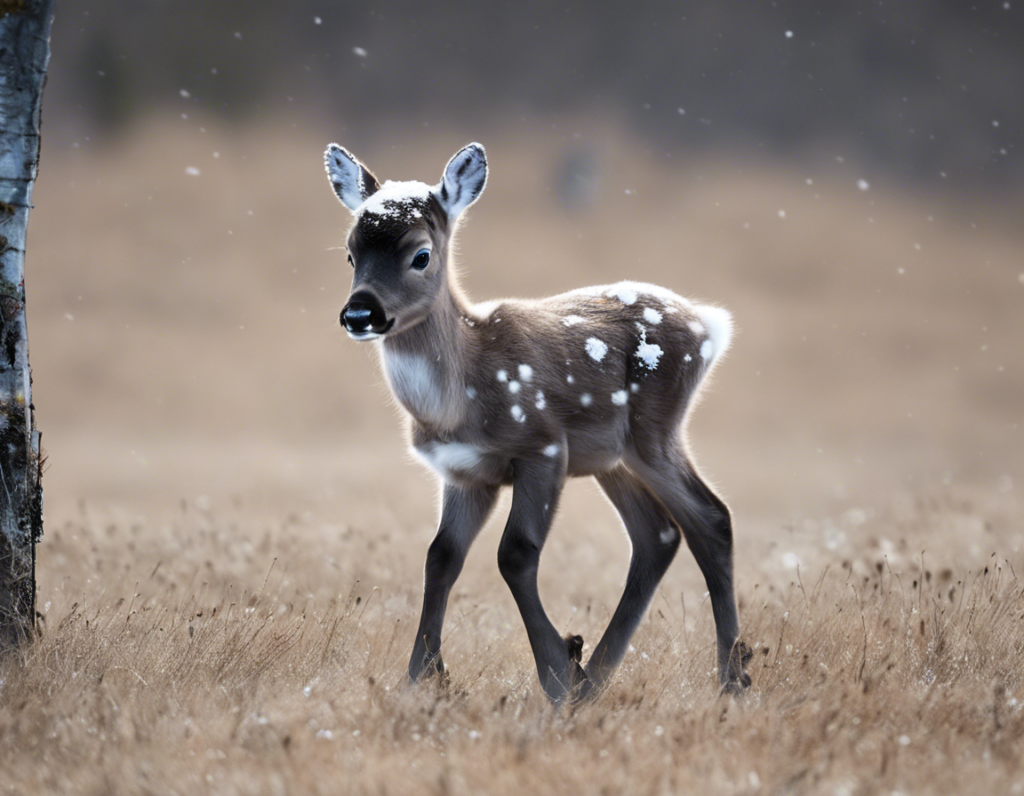Introduction
The magnificent and elusive reindeer, known for their iconic role in Christmas folklore, have captured the hearts and imaginations of people across the globe. However, little is known about the early life of these majestic creatures, particularly the baby reindeer. In this blog post, we delve into the fascinating world of baby reindeer stalkers, shedding light on their habits, behaviors, and development.
Understanding the Baby Reindeer
-
Birth and Early Days: Baby reindeer, also known as calves, are born in late spring or early summer after a gestation period of around seven and a half months. Newborn calves are typically up and walking within a few hours of birth, exhibiting remarkable strength and resilience.
-
Bonding with the Mother: The bond between a baby reindeer and its mother is crucial for its survival. Calves rely on their mothers for nourishment and protection during the early stages of life. The mother reindeer is fiercely protective of her calf, keeping a close watch to ward off potential predators.
-
Feeding and Growth: Baby reindeer primarily feed on their mother’s milk, which is rich in nutrients essential for their growth and development. As they grow older, calves gradually transition to a diet of grasses, herbs, and lichens found in their natural habitat.
Habitat and Environment
-
Natural Habitat: Baby reindeer inhabit the vast, rugged landscapes of the Arctic tundra, where they navigate snowy expanses and icy terrain with ease. The harsh environment poses challenges for their survival, but baby reindeer are well-adapted to thrive in these extreme conditions.
-
Migration Patterns: Baby reindeer are often part of large herds that undertake seasonal migrations in search of food and shelter. These migrations are a key aspect of their way of life, enabling them to access vital resources across vast distances.
-
Predators and Threats: Despite their resilience, baby reindeer face threats from predators such as wolves, bears, and eagles. The vigilance of the mother reindeer and the safety of the herd are critical in protecting the calves from harm.
Behavior and Social Dynamics
-
Playful Nature: Baby reindeer are known for their playful and curious demeanor, engaging in frolicking activities with other calves within the herd. Play is not just a source of entertainment but also serves as a way to develop physical skills and social bonds.
-
Social Hierarchy: Within the herd, baby reindeer learn to navigate social hierarchies and establish relationships with other members. They observe and mimic the behavior of older reindeer, gradually learning the customs and norms of their community.
-
Learning and Adaptation: Baby reindeer rely on instinctual behaviors passed down through generations to navigate their environment. They learn essential survival skills from their mothers and other experienced reindeer, honing their abilities to thrive in their challenging habitat.
Conclusion
In conclusion, the life of a baby reindeer stalker is a testament to resilience, adaptability, and the beauty of nature. These remarkable creatures navigate the harsh Arctic landscape with grace and strength, embodying the spirit of endurance and survival. By understanding and appreciating the early stages of a baby reindeer’s life, we gain insight into the intricate ecosystem of the Arctic and the wonders of the natural world.
FAQs
Q1: What are baby reindeer called?
A1: Baby reindeer are known as calves.
Q2: When are baby reindeer typically born?
A2: Baby reindeer are usually born in late spring or early summer.
Q3: What do baby reindeer eat?
A3: Baby reindeer primarily feed on their mother’s milk initially and later transition to a diet of grasses, herbs, and lichens.
Q4: What predators do baby reindeer face in the wild?
A4: Baby reindeer are vulnerable to predators such as wolves, bears, and eagles.
Q5: Do baby reindeer migrate with the herd?
A5: Yes, baby reindeer are often part of large herds that undertake seasonal migrations in search of food and shelter.
Q6: How do baby reindeer learn survival skills?
A6: Baby reindeer learn essential survival skills from their mothers and other experienced reindeer within the herd.
